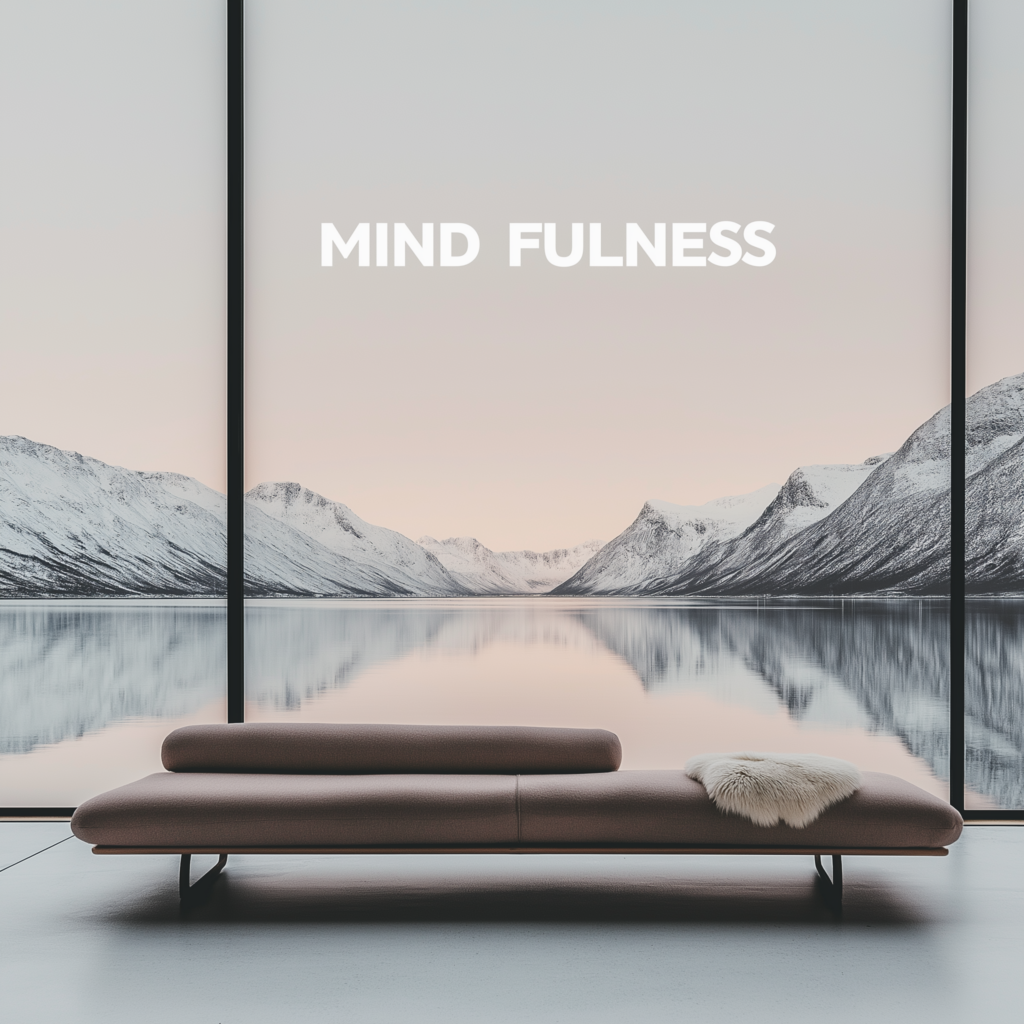Let’s look closer at the Practice of Mindfulness:
There is a formal Mindfulness Practice and an informal Mindfulness Practice. The formal Mindfulness Practice ist the Meditation Practice.The informal Mindfulness Practices are different techniques we use in daily life to focus or calm down. There is not always a clear distinction, as Walking Meditation may be a formal or an informal practice when used as Mindful Walking in daily life.
Let’s look closer at the steps we practice during the formal Mindfulness Meditation Practice: What are we actually “doing” when meditating? Mindfulness often is connected to “non-doing”. Before starting here is our Definition of Mindfulness in NL MINDFUL:
Definition of Mindfulness:
Mindfulness is the attitude of maintaining attention to the present moment experience with Kindness and Self Compassion. Let’s keep in mind two important aspects of Mindfulness:
Paying Attention:
As kids we were told „pay attention!“ by our parents or in school, but nobody taught us HOW. Getting distracted is normal. Coming back to our attention, again and again, we build our capacity to sustain attention. We observe the natural cycle of our mind: Wandering and Coming back. We continue Coming back to our anchor, our home base in daily life, even if our mind is wandering a lot, again and again, with patience. We will have a clearer and more stable mind over time.
The Willingness to be with what is:
The willingness to be with ourselves, with how we feel right now, as resistance and contraction may make our suffering even worse. It’s not surrendering to what is, it is about waking up, becoming aware of what is going on and staying balanced amidst turbulences. We can think and act more wisely when we are calm (non-doing). Mindfulness means showing up for life and ourselves with a balanced state of mind. Staying by your side, when things get tough.
Let’s LOok at the Mindfulness Meditation steps:
Arriving in the Here & Now:
Finding your meditation posture that feels right for you, either Sitting, Standing, Lying or Walking, Eyes open or closed. Noticing how you are feeling right now without judging yourself.
Getting in touch:
Getting in touch with yourself: How am I doing right now in this moment? Feet on the ground to feel connected. Paying attention. Observing body sensations that may signal stress: Allow some softening of body and mind, breahting into tensed body areas like the stomach.
Using the Breath as an Anchor:
Taking some deep & slow breaths. Staying with one breath at a time and Feeling the gentle Rising & Falling of the breath. Becoming aware of your breath where it is most tangible. Staying with the wave of each In-Breath and with the wave of each Out-Breath. Breath by Breath- Moment by Moment. If you lost attention: gently coming back. Coming back to your anchor- again and again. Each moment you kindly become aware of your Wandering Mind is a mindful moment.
Allowing:
The Willingness to be with what is: Giving space and not pushing away, becoming aware and observing: Noticing, Softening. Letting sounds as they are: Not getting lost in thoughts around the sound, not analyzing, simply listening, with openness and kindness. Reminder: Soften-Sooth-Allow
Labeling:
Labeling Thoughts, emotions, sensations. Labeling creates some distance and we are able to observe without identifying to easily. Labels for thoughts: Thinking, Dreaming, Fantasizing. Labels for emotions: f.e.: Anger, Sadness, Fear. Mental notes: It’s just a thought. It’s just a cloud passing by. It’s just sadness showing up for a while.
Kindness:
How we relate is essential: Are we gentle to ourselves or harsh?Gently noticing the Wandering Mind. Bringing some Kindness to yourself- See if you can imagine to embrace sadness or fear. Mental notes: May I be safe & protected. May I be free from pain & fear. Soothing Touch: Hand on your heart.
The steps for our Mindfulness Practice in summary:
Arriving in the Here & Now
Getting in Touch
Anchoring
Allowing
Labeling
Kindness

Meditation Posture:
In our Mindfulness Class you can chose the Meditation Posture that feels right for you: Either Sitting, Standing or Lying down.You can sit on a comfy chair or sofa if you like with an upright spine or in a cozy casual way. We even have a Tea Mind Meditation in our NL MINDFUL class with a cup of tea or coffee. There is no perfect way to meditate, it should be your personal way.
We suggest our participants to explore practicing Mindfulness in a Sitting Position with an upright spine for about 5-10 minutes. The upright spine may help you stay awake, clear and focused. It certainly gives you a sense of the right intention for your Meditation, focus, intention and solemnity. Though, it certainly is the most difficult position for our participants to get used to. Explore how you can sit upright and stay relaxed at the same time. If it feels better, you can sit with an elevated spine on your sofa or bed as well, with a cushion in your back. Stay playful and develop a sitting position you can sustain for about 5-10 minutes. You can sit on the floor with crossed legs and use a Yoga cushion, preferably one to adapt the sitting height. Alternatively you can use a normal cushion to sit a little bit higher, with slightly crossed legs a little bit lower to give you a more comfortable feeling.
It might be difficult for you to sit for a longer time because of orthopedic or other reasons, in this case lying down on the floor might be the right choice for you, on a Yoga mat or blanket. Both positions signal us the special and solemn moment of Meditation, therefore it is of value to explore them for a while. It is not necessary to stick with them.
If these positions do not suit you at all, chose your favorite position. You can always come back to explore Sitting Meditation and its benefits later on.

Get in touch, if you have any questions or to get our Audio Lessons with Meditations of Week 1 for free.
Details about Digital Mindfulness Class NL MINDFUL here.
Visual: By NL Publishing with AI